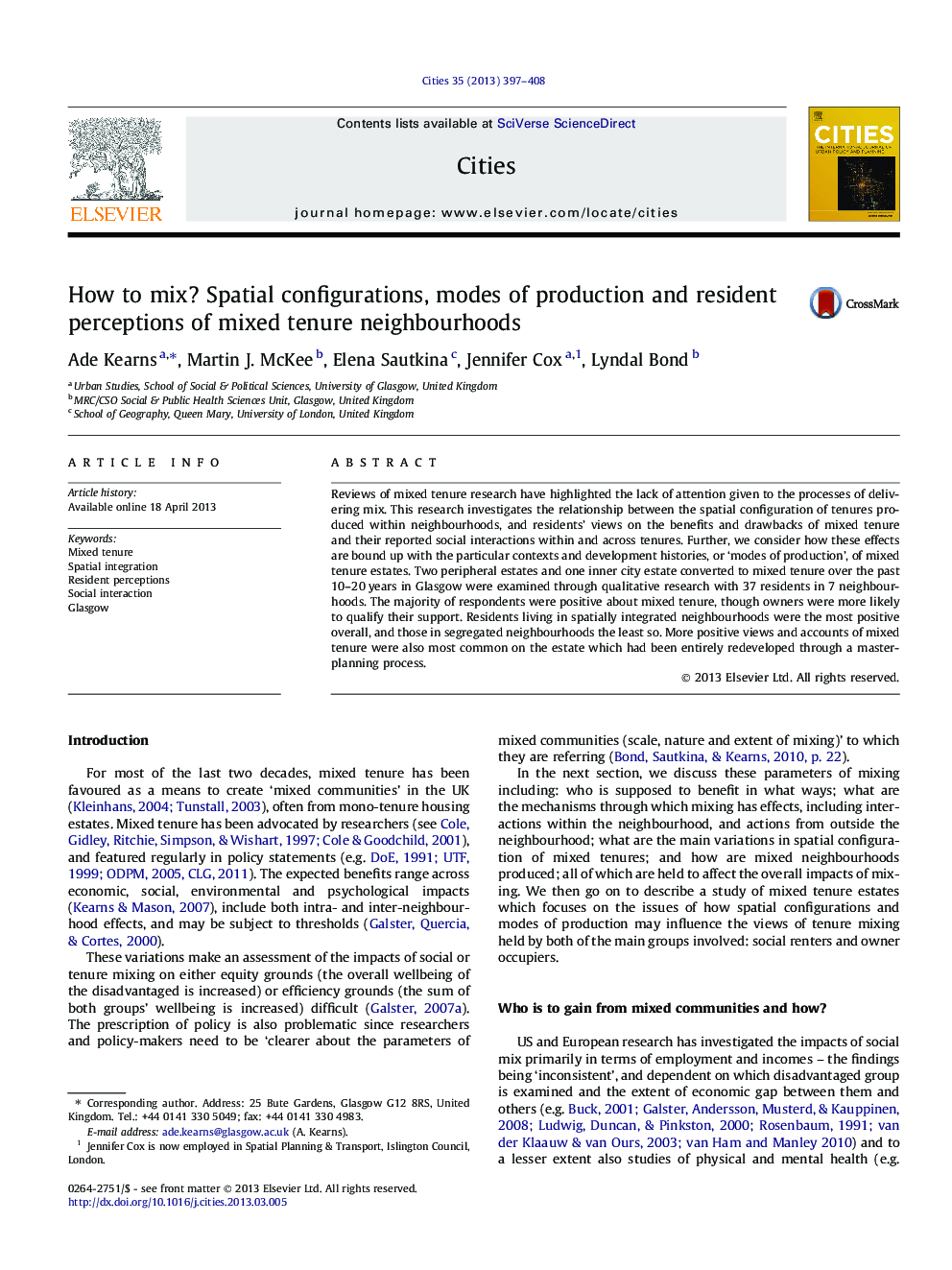| Article ID | Journal | Published Year | Pages | File Type |
|---|---|---|---|---|
| 1008474 | Cities | 2013 | 12 Pages |
•Resident perceptions of mixed tenure and reported social interactions between tenure groups were studied on three estates.37 interviews were conducted across seven neighbourhoods: two integrated areas, two segmented and three segregated.The majority of respondents were positive about mixed tenure, though owners were more qualified in their support.•Residents in spatially integrated neighbourhoods were the most positive;those in segregated neighbourhoods least so.•More positive accounts of mixed tenure were most common on the estate redeveloped through a master-planning process.
Reviews of mixed tenure research have highlighted the lack of attention given to the processes of delivering mix. This research investigates the relationship between the spatial configuration of tenures produced within neighbourhoods, and residents’ views on the benefits and drawbacks of mixed tenure and their reported social interactions within and across tenures. Further, we consider how these effects are bound up with the particular contexts and development histories, or ‘modes of production’, of mixed tenure estates. Two peripheral estates and one inner city estate converted to mixed tenure over the past 10–20 years in Glasgow were examined through qualitative research with 37 residents in 7 neighbourhoods. The majority of respondents were positive about mixed tenure, though owners were more likely to qualify their support. Residents living in spatially integrated neighbourhoods were the most positive overall, and those in segregated neighbourhoods the least so. More positive views and accounts of mixed tenure were also most common on the estate which had been entirely redeveloped through a master-planning process.
